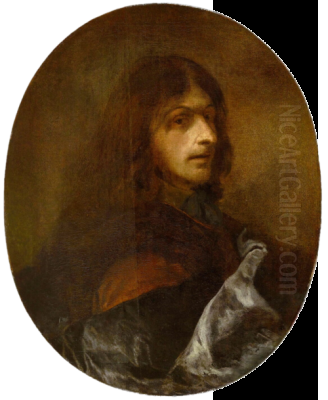
Sébastien Bourdon stands as a significant, albeit sometimes enigmatic, figure in the landscape of 17th-century French art. A painter and etcher of remarkable versatility, his career spanned diverse genres, geographical locations, and stylistic influences. Born into a period dominated by the grand manner of Baroque classicism, Bourdon navigated the artistic currents of Rome, Venice, Paris, and even the Swedish court, leaving behind a body of work characterized by technical skill, intellectual depth, and a chameleon-like ability to adapt and synthesize various styles. His life, marked by religious conviction and displacement, mirrored the complexities of his era, contributing to a unique artistic trajectory.
Early Life and Formative Years
Sébastien Bourdon was born on February 2, 1616, in Montpellier, a city in the south of France with a notable Protestant community. His background was modest; his father, Marin Bourdon, was a painter, possibly specializing in glass painting, and a devout Protestant (Lutheran). His mother, Jeanne Gaultière, came from a family of goldsmiths. This Protestant upbringing would significantly shape Bourdon's life and career choices, particularly in the religiously charged atmosphere of 17th-century Europe.
Recognizing his son's potential, Marin Bourdon sent the young Sébastien to Paris around the age of seven. There, he entered the studio of a painter often identified as Jean Barthélemy. He remained as an apprentice for approximately seven years, acquiring the fundamental skills of drawing and painting. However, sources suggest he left this apprenticeship around the age of fourteen, perhaps seeking broader experience or driven by youthful restlessness.
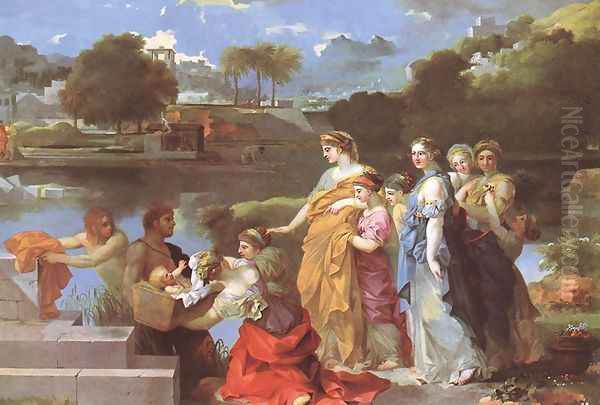
His departure from the Parisian studio marked the beginning of a period of travel within France. Bourdon is known to have worked in Bordeaux and Toulouse, though details of his activities during this time are scarce. Financial hardship seems to have been a constant companion, leading him to enlist in the army in Paris. Fortunately, his military career was short-lived. An officer, recognizing Bourdon's artistic talent, arranged for his release and provided funds for him to travel to Rome, the ultimate destination for aspiring artists of the era. Bourdon arrived in the Eternal City around 1634, poised to immerse himself in its rich artistic heritage.
The Roman Experience: Influences and Adversity
Rome in the 1630s was a vibrant artistic crucible. Bourdon arrived at a time when the legacy of Caravaggio was still palpable, the High Baroque was flourishing under figures like Gian Lorenzo Bernini and Pietro da Cortona, and a strong classical counter-current was being championed, notably by French expatriates. Bourdon, with his keen eye and adaptable talent, absorbed these diverse influences.
He fell in with the circle of Northern European artists, particularly the Dutch and Flemish painters known as the Bamboccianti, followers of Pieter van Laer, nicknamed 'Il Bamboccio'. These artists specialized in small-scale genre scenes depicting the everyday life of peasants, soldiers, and street vendors in Rome and its environs. Bourdon embraced this style, producing lively bambochades that found a ready market. These early works showcase his skill in capturing anecdotal detail and rustic character, often with a lively, somewhat rough-hewn energy.
However, Bourdon also looked towards the more elevated styles prevalent in Rome. He studied the works of masters like Caravaggio, whose dramatic use of chiaroscuro left an imprint on his handling of light and shadow. He also engaged deeply with the classical tradition, particularly as interpreted by his fellow countrymen Nicolas Poussin and Claude Lorrain, who were establishing themselves as leading figures in Rome. The structured compositions, idealized landscapes, and historical or mythological subject matter of Poussin, and the poetic, light-filled landscapes of Claude, offered a powerful alternative to the low-life genre scenes of the Bamboccianti. Bourdon developed a lasting admiration for Poussin, whose influence would become increasingly apparent in his later work. He also formed friendships with artists like Claude Lorrain and Andrea Sacchi.
Bourdon's Roman sojourn, though artistically fruitful, was cut short by religious intolerance. As a Protestant, he was vulnerable in the heart of the Papal States, especially during the Counter-Reformation. According to accounts, he was denounced to the Inquisition in 1637, allegedly by a fellow French artist, possibly Louis de Boullogne the Elder, over a dispute or perhaps simply due to his faith. Facing potential imprisonment or worse, Bourdon was forced to flee Rome hastily, abandoning his possessions.
Travels and Return to Paris
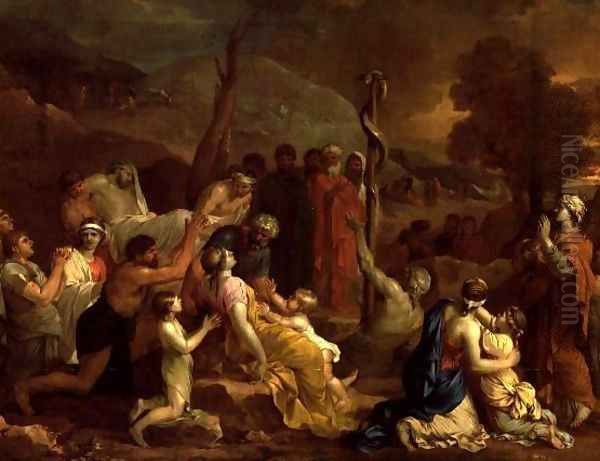
Leaving Rome under duress, Bourdon did not immediately return to France. Instead, he traveled to Venice, the city renowned for its rich colorito and painterly traditions established by Titian, Veronese, and Tintoretto. The exposure to Venetian art further broadened his stylistic palette, refining his sense of color and atmospheric effects. He likely also spent time in other northern Italian cities, potentially absorbing influences from the Carracci school based in Bologna.
By the late 1630s or early 1640s (sources vary, though 1637 is often cited for his return to Paris), Bourdon was back in the French capital. Paris was then dominated by the style of Simon Vouet, who had returned from Italy over a decade earlier and established a highly successful workshop, popularizing a decorative, elegant interpretation of the Italian Baroque. Bourdon had to establish his reputation amidst this competitive environment.
He initially continued to paint genre scenes reminiscent of his Roman bambochades and works influenced by artists like Giovanni Benedetto Castiglione, known for his pastoral scenes and innovative etching techniques. However, Bourdon increasingly turned towards more ambitious projects, including large-scale religious and historical paintings, seeking to position himself as a serious history painter in the tradition of Poussin.
Achieving Recognition: The Académie and Major Commissions
A pivotal moment in Bourdon's Parisian career came in 1643 when he received a prestigious commission from the Goldsmiths' Guild of Paris to paint the annual "May" painting for the Cathedral of Notre-Dame. His contribution, The Crucifixion of St. Peter, was a powerful and dramatic work that showcased his mastery of composition, anatomy, and dramatic expression, drawing clear inspiration from Caravaggio but executed with a controlled intensity. This painting significantly enhanced his reputation and demonstrated his capabilities as a major history painter.
Bourdon's standing within the Parisian art world was further solidified in 1648 when he became one of the twelve founding members (the anciens) of the French Royal Academy of Painting and Sculpture (Académie Royale de Peinture et de Sculpture). This institution, established under royal patronage, aimed to elevate the status of artists, provide structured training, and promote a French national style, largely based on classical principles. Bourdon joined other prominent artists like Charles Le Brun, Eustache Le Sueur, Laurent de La Hyre, and Philippe de Champaigne in this foundational group. His involvement underscored his acceptance within the artistic elite, despite his Protestant faith, which could sometimes be a barrier in official circles.
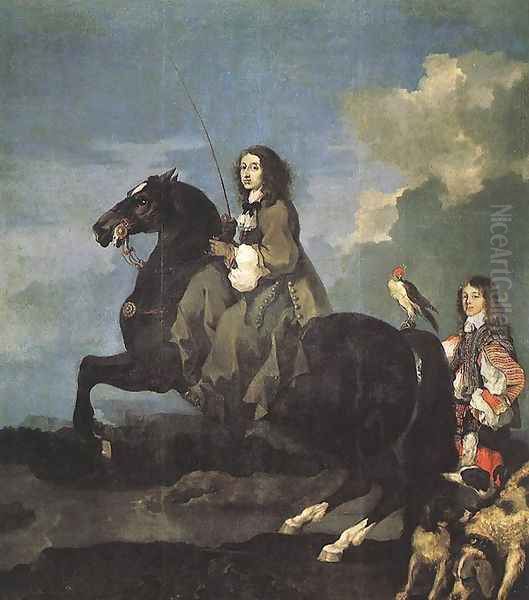
His association with the Académie continued throughout his career. He actively participated in its activities and debates, contributing to the theoretical discourse that shaped French art for generations. His commitment was recognized in 1655 when he was appointed Rector of the Académie, a position of significant administrative and pedagogical responsibility.
The Swedish Interlude: Court Painter to Queen Christina
In 1652, Bourdon's career took an unexpected international turn. He accepted an invitation from Queen Christina of Sweden to become her First Painter at the court in Stockholm. Christina was an extraordinary figure – highly intelligent, learned, a patron of arts and sciences, and notoriously unconventional. She was assembling a collection of art and attracting scholars and artists from across Europe, including the philosopher René Descartes (whom Bourdon may have painted).
Bourdon spent approximately two years in Stockholm (until 1654). His primary duty was to paint portraits of the Queen and members of her court. His portraits of Christina capture her intellectual intensity and somewhat severe demeanor. Beyond portraiture, he also executed other commissions, including historical or allegorical subjects like The Fall of Simon Magus. His time in Sweden provided financial security and prestige, associating him with one of Europe's most fascinating and powerful monarchs.
However, Queen Christina's reign was tumultuous. Her decision to abdicate the throne in 1654 (partly driven by her secret conversion to Catholicism) effectively ended Bourdon's position at the Swedish court. He returned to Paris, resuming his activities within the Académie and his successful Parisian practice.
Mature Style: Eclecticism and Mastery
Bourdon's mature style is often described as eclectic, reflecting his diverse training and influences. He possessed an exceptional ability to work convincingly in various manners. He could paint intimate genre scenes reminiscent of the Dutch masters or the Bamboccianti, grand historical and religious compositions in the style of Poussin, atmospheric landscapes recalling Claude Lorrain or Gaspard Dughet, and elegant portraits.
His religious paintings often display a Poussinesque clarity of composition and narrative, combined with a sensitivity to human emotion and sometimes a more dynamic, Baroque handling of figures and drapery. Works like The Finding of Moses, The Brazen Serpent, and the series depicting The Seven Acts of Mercy (which he also translated into popular etchings) exemplify his skill in organizing complex multi-figure compositions and conveying biblical narratives with dignity and pathos.
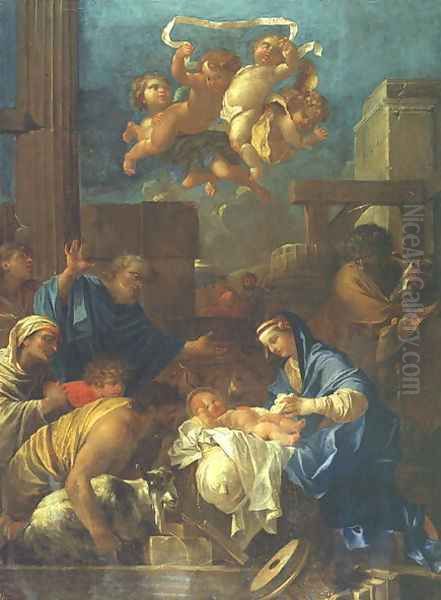
His landscapes, while often serving as settings for biblical or mythological scenes, also show a genuine appreciation for nature. They blend the idealized structures of Poussin and the atmospheric light of Claude with a sometimes more naturalistic rendering of foliage and terrain, contributing significantly to the development of the classical landscape tradition in France.
Bourdon was also a highly accomplished portraitist. His portraits are characterized by their psychological insight, sober elegance, and often a refined, somewhat cool palette. Besides Queen Christina, he painted self-portraits and likenesses of other notable figures, capturing their status and individuality with clarity and precision.
This very versatility, however, sometimes led to criticism. Some contemporaries and later art historians felt Bourdon lacked a truly original, distinctive personal style, seeing him primarily as a brilliant imitator of others, particularly Poussin. While his ability to mimic was undeniable, this assessment perhaps undervalues his skill in synthesizing these influences into works that possess their own integrity and quality. He navigated the tension between the structured classicism promoted by the Académie and the more dynamic or naturalistic trends emanating from Italy and the Netherlands.
Bourdon as an Etcher
Beyond his prolific output as a painter, Sébastien Bourdon was also a highly skilled and influential etcher. He produced a significant number of prints, often based on his own paintings or drawings. His etching style is characterized by its fluid, painterly lines and effective use of light and shadow.
His series of etchings illustrating The Seven Acts of Mercy became particularly well-known and widely circulated, helping to disseminate his compositions and enhance his reputation. In his printmaking, influences from artists like Rembrandt and, perhaps more directly, Giovanni Benedetto Castiglione, can be discerned in the free handling of the needle and the atmospheric effects achieved. Bourdon's etchings stand as an important part of his oeuvre, demonstrating his mastery across different media.
Personal Life and Faith
Bourdon's Protestant faith remained a defining aspect of his life. While it caused him significant trouble in Rome, he seems to have navigated the religious complexities of France more successfully, particularly after establishing his reputation. His marriage further connected him to the Protestant artistic community in Paris. In 1641, he married Suzanne du Guernier, the sister of Louis du Guernier, a Protestant miniaturist and engraver. This connection likely provided both personal support and professional networks within the Huguenot milieu.
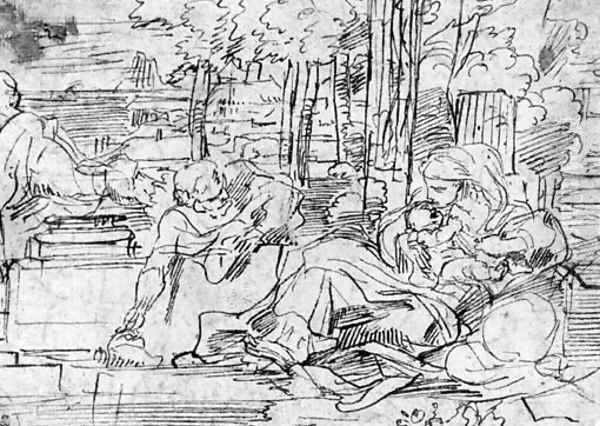
His wife died relatively young, in 1658 or shortly thereafter. Bourdon later remarried, wedding Marguerite Jumeau in 1663. Throughout his life, despite the pressures and potential disadvantages, he appears to have remained committed to his Protestant beliefs. His ability to thrive within the predominantly Catholic structure of the French art world, even rising to leadership in the Royal Academy, speaks to his talent, diplomacy, and perhaps a degree of tolerance afforded to highly skilled individuals.
Contemporaries, Influence, and Legacy
Bourdon operated within a rich artistic context, interacting with many leading figures of his time. His relationships with Poussin and Claude in Rome were formative. In Paris, he was a contemporary and colleague of the founding generation of the Académie, including Charles Le Brun, who would come to dominate French art under Louis XIV, Eustache Le Sueur, Laurent de La Hyre, and Philippe de Champaigne. He also competed with established figures like Simon Vouet and younger rivals like Pierre Mignard.
His influence extended through his role in the Académie and through his own students, such as Nicolas-Pierre Loir. His ability to work across genres, from grand history painting to intimate landscape and genre scenes, provided a versatile model. His landscapes, in particular, contributed to a distinctively French classical landscape tradition.
While sometimes overshadowed by the more singular visions of Poussin or the dominant influence of Le Brun, Bourdon's reputation has endured. He is recognized today as a highly accomplished and intelligent artist whose work reflects the complex artistic dialogues of the 17th century. His paintings and etchings are held in major museums worldwide, including the Louvre in Paris, the National Gallery in London, the Prado in Madrid, and the Hermitage in St. Petersburg.
Art historians value his technical proficiency, his intellectual engagement with diverse artistic traditions, and his significant contributions across multiple genres. His Crucifixion of St. Peter remains a landmark of French religious painting, and his landscapes and genre scenes offer compelling insights into the artistic tastes and cultural life of his time.
Conclusion
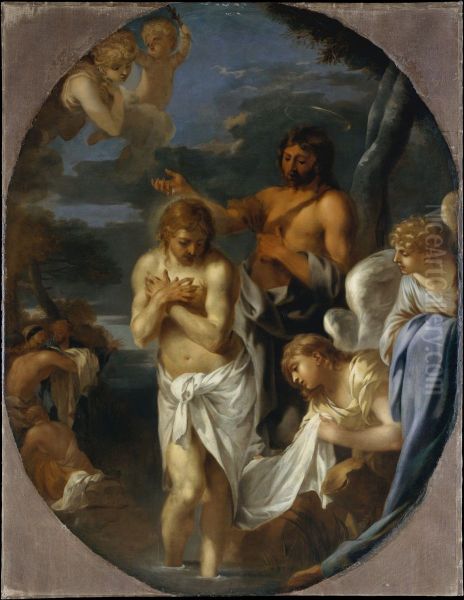
Sébastien Bourdon died in Paris on May 8, 1671, at the age of 55. He left behind a substantial and varied body of work that testifies to a life spent in dedicated pursuit of artistic excellence. From his early struggles and formative experiences in Rome to his rise within the Parisian art establishment and his service to a foreign queen, Bourdon's career was marked by adaptation and resilience. His Protestant faith shaped his journey, forcing him to navigate challenging circumstances but perhaps also fostering a certain independence of spirit. As a painter and etcher, he mastered numerous styles and genres, synthesizing influences from Caravaggio, the Bamboccianti, Poussin, Claude, and Venetian masters. While his eclecticism sometimes drew criticism, it also highlights his remarkable skill and deep understanding of the European artistic traditions of his day. Sébastien Bourdon remains a key figure for understanding the richness and complexity of French art during the Grand Siècle.